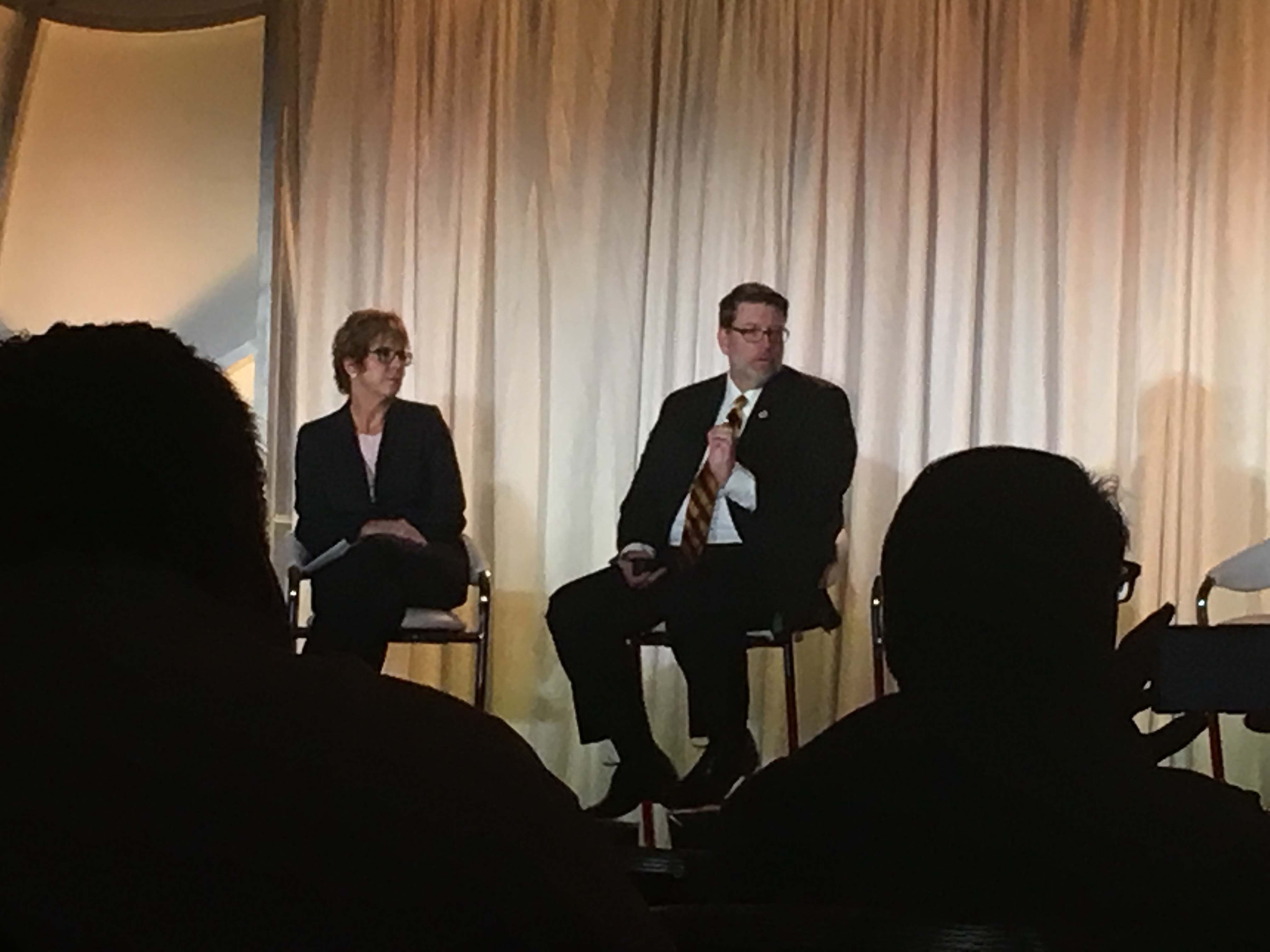This week, we attended the seventh annual SMA Sales Force Productivity Conference in Atlanta. The conference had more than 25 separate sessions that focused on the latest trends in the sales management space, as well as the sales tech trends to keep in mind for the future. Here are the highlights from the sessions.
Building an Agile Sales Organization: Moving Beyond the “How-to” Mindset
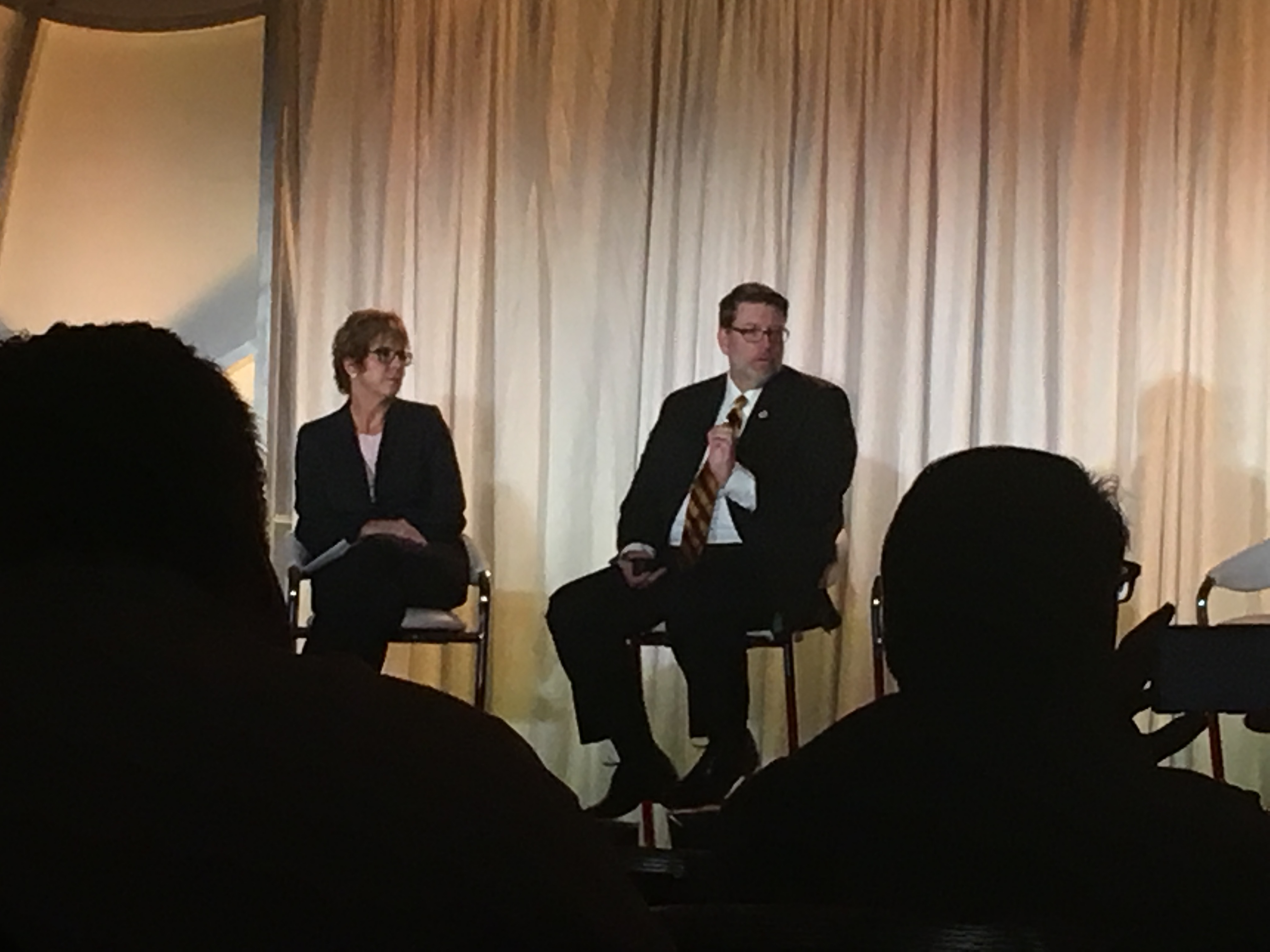
Leff Bonney, FSU Associate Professor of Sales and Marketing, and Michelle Vazzana, CEO of Vantage Point Performance, kicked off the conference by talking about managers needing to move beyond the “how-to” mindset. As increasing revenue goals become more and more challenging for sales teams, we’re finding that there is no one-size-fits-all methodology for how to win a sales deal.
On average, 52% of sales reps make their quota, and that number is declining every year. But there is a clear difference in the behavior of top-performing managers and the critical mass of sales managers. In their study of more than 500 managers, the top 25% exceeded their target by 15% while the bottom 25% of managers fell short by 24%. That top 25% also got 30% more sellers to quota and generated an extra $3.5 million per manager per year. Vazzana notes that “this idea of sales enablement for sales managers is not so simple.” So what did this top 25% do differently?
- They had fewer, but longer, formal coaching sessions
- They requested formal meetings instead of waiting for a rep to request coaching
- Their coaching happened in the earlier stages of the sales cycle
- They only required a plan for a subset of important opportunities and calls
However, it’s not just how managers need to be selling that is important. What we train our sellers is just as important, and in order to be effective at this, we must have an understanding of the different ways they’ll need to be able to sell.
“We have to move past how we train people and find out how to give them guidance on when to use certain methodologies.” —Leff Bonney
Bonney stressed four main points:
- Current one-size-fits-all sales methods are ineffective
- Customers are highly unlikely to say rep strategies and buying processes are aligned
- High-performing salespeople do not adhere to standard sales processes
- High-performing salespeople adjust strategy to the situation they face
Managers need to focus on ensuring that the strategies are right for the situations that sales teams face. And this idea isn’t just successful in selling, but in coaching as well. This ability to adjust your approach, or selling fluency, is a key differentiator in high-performing managers. If managers can adjust their mindset from “how to” and instead focus on “when to,” they will have a leg up on building a high-performing sales team.
Assessing Return on Sales Technology Investments
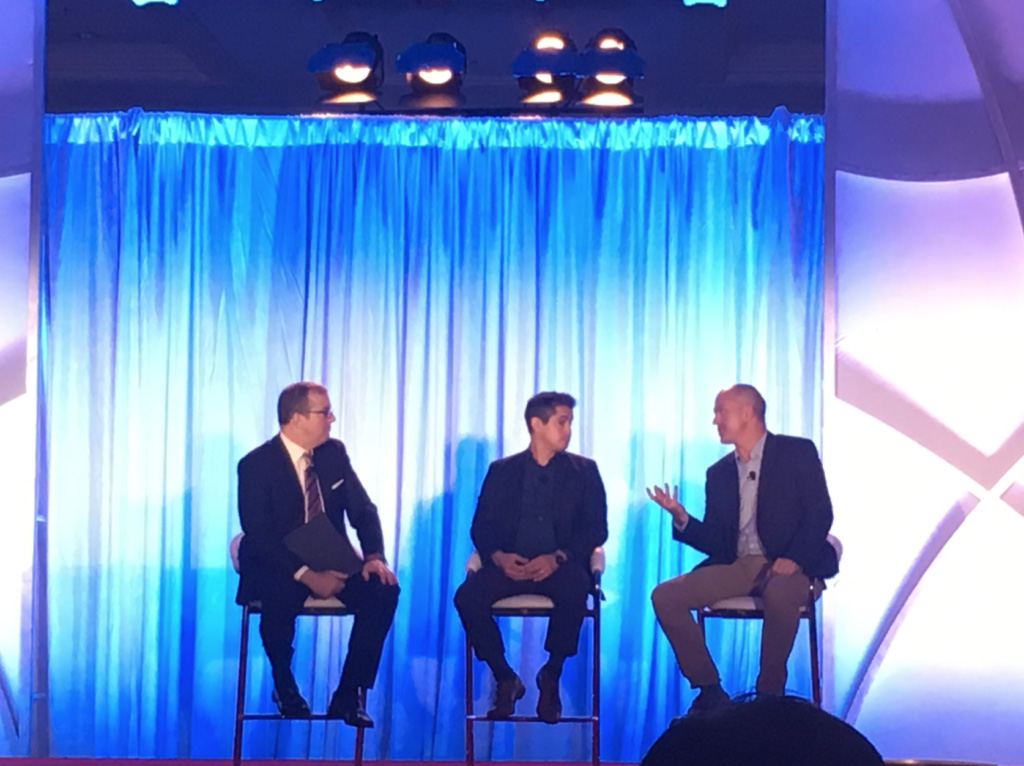
Assessing return on sales technology investments is a challenge that many organizations face when trying to determine which technologies to invest in. Jerry Grassi, Chief Revenue Officer at Skuid, and Stuart Thompson, Sales Engineering Executive at Highspot, addressed how you can accurately measure the ROI in these investments.
According to a survey conducted by SMA, only 13% of organizations believe that their pre-purchase ROI estimates are accurate. The big question in the room was how to accurately measure ROI. For this, there are no shortcuts; it’s all about data.
“Unless you take the time to dig into the data, you aren’t going to get good ROI.” —Jerry Grassi
What data should we be measuring? SMA’s study showed that cost reduction was the most common and most obvious measurement for ROI, but 58% of sales leaders surveyed by SMA said that productivity was key, while 55% noted that time saved was also an important measurement. Thompson also underscored the importance of adoption in measuring the ROI of an investment.
“If adoption isn’t at the level you’re expecting, your ROI won’t be at the level you’re expecting.” —Stuart Thompson
Taking the Babble Out of Sales Enablement
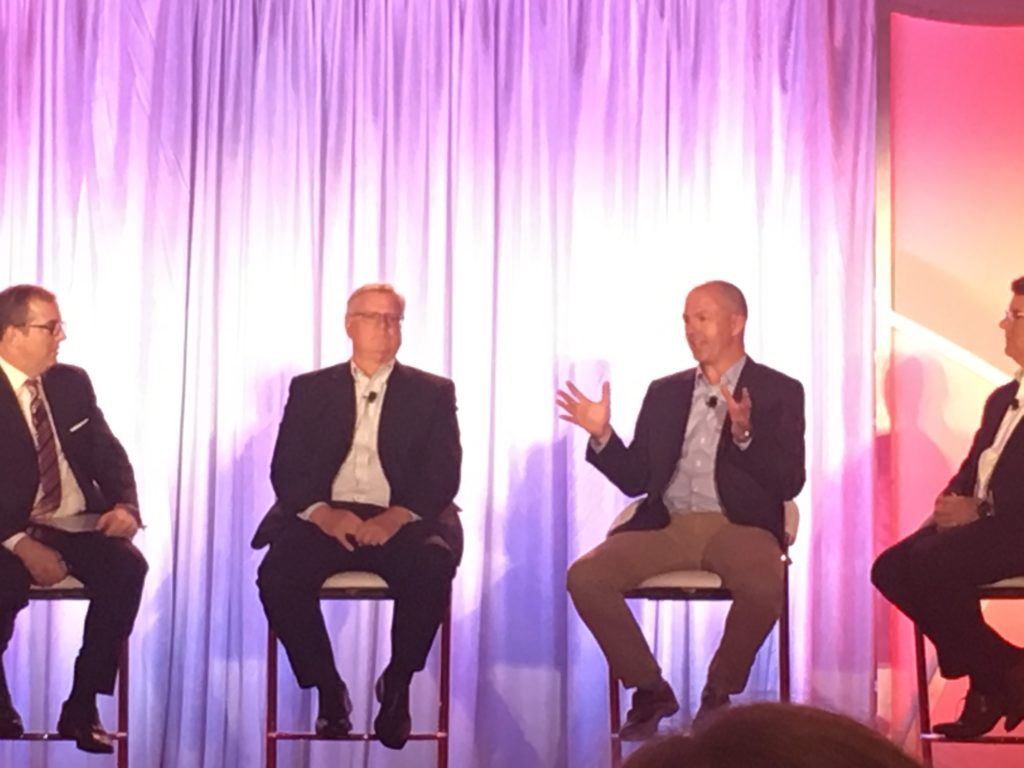
Stuart Thompson, Sales Engineering Executive at Highspot, Kevin Raybon, VP of Global Operations at Thomson Reuters, and Carl Strenger, VP of Sales Operations at UPS, joined together for a panel solely focused on our favorite topic: sales enablement.
The panel kicked off with what each person’s definition of sales enablement, but Thompson summed it up with a concise definition.
“Sales enablement provides the right tools, content, and processes to help sales be more effective.” —Stuart Thompson
This sparked a debate about the differences between sales operations, sales effectiveness, and sales enablement. While some believed sales effectiveness and sales enablement have enough crossover to encompass the same function, others believed that all three of them have distinct functions in an organization. What it all comes down to is each company’s distinct definition of sales enablement, and how they think each of these roles should play together.
When it comes to measuring the success of sales enablement, there were three main things all panelists touched on: increased adoption, increased time delivering and selling, and less time finding content. Thompson touched on a fourth idea that seemed to resonate with the audience:
“I think you do need to measure adoption. Not just how many people are using it, but also the breadth of adoption.”
—Stuart Thompson
Having your sales reps deeply committed to your sales enablement solution can be a good indicator of how effective it is. If reps are invested in your sales enablement solution, they’ll find more ways to utilize it to better their selling strategies. These best practices can then be used to share across the org. Bottom line: if reps love using a solution, it means it’s working.
The Four Salesmen of the Apocalypse: Automation, Analytics, Artificial Intelligence, and Autonomous Workers
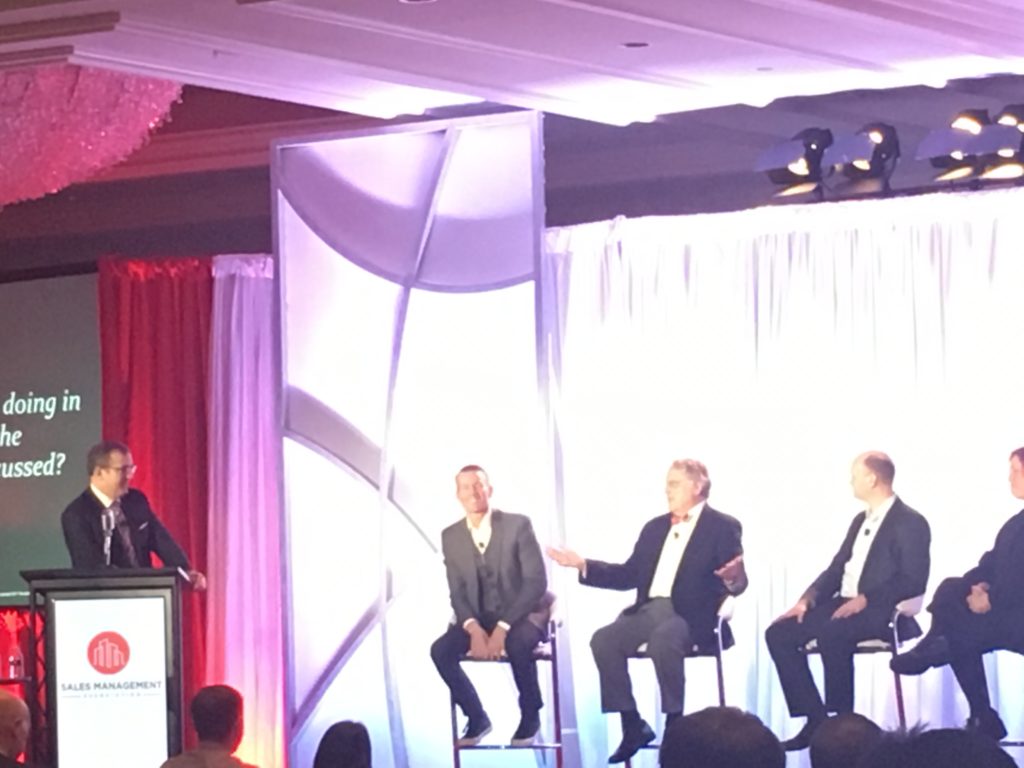
Panelists Benn Konysynski, Professor Goizueta Business School at Emory University, Dennis Mortensen, CEO of x.ai, Erich Sachse, Vice President, Professional Services at Optymyze, and Tracy YoungLincoln, Executive Vice President at Intelligence Moxie, spoke about the role technology plays in the future of sales. The biggest thing we’re moving towards: AI, AR, VR.
We’ve moved toward machines and technology doing more and more, so we now have to draw the line of when to have technology step away and let human interaction step in. Our role has started to center on the question, “What do we teach AI to do?”
It’s the mundane processes that we’ve let our machines take over. Robotic chat functions, machines setting up meetings, and automated processes are where we feel most comfortable with AI. Humans still want to have control and don’t trust the machine yet. As machines get better, this routine is bound to change every year.
But across the panel, everyone echoed the sentiment that no matter how much we teach a machine, we will never be able to teach them the ability to connect with someone on a deep and personal level.
“Caring jobs are the ones that are growing and you’ll see the same thing happen in the selling role.” —Tracy YoungLincoln
The future may be moving toward being driven by algorithms, but the human element of selling can’t be replaced. It’s about finding the right people who can be agile in this new technology environment. As AI plays a larger role in the selling space, we need salespeople who are comfortable with change, confident with numbers and data, and who think in terms of probability.
So, what does sales look like in the future? This question is a tough one to answer, but Benn hit the nail on the head.
“In order to understand how we sell in the future, we need to first learn how the buyers are going to buy, so we can know how the sellers should sell.” —Benn Konysynski
Our selling strategies should always start with our buyers, and only time will tell how they will buy in the future. Read more about effective sales enablement in the 2017 State of Sales Enablement.


